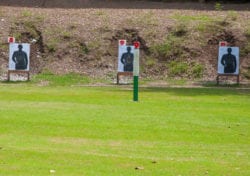Supreme Court Issues Endangered Species Decision
On November 27, the US Supreme Court issued a decision pursuant to the Endangered Species Act that favored property owners.
In 2001, the Fish and Wildlife Service (FWS) listed the dusky gopher frog as an endangered species. Currently, the species is only known to exist in open canopy forest areas of coastal Mississippi. The open canopy forest allows for sunshine to penetrate to the forest floor, which results in dense vegetation the frog needs for its habitat. As with other frog species, the dusky gopher frog is dependent on ephemeral ponds for egg-laying and early development, due to the lack of fish which would otherwise eat the eggs and tadpoles.
The key land use issue in this case was the FWS designation of an area call Unit 1 in Louisiana as “critical habitat” for the endangered species. The frog had apparently once lived in Unit 1. However, the land owners argued that the frog had not lived in Unit 1 for several decades. More important, the land owners argued that Unit 1 is currently not a suitable habitat for the frog because it had become a closed canopy forest system. The FWS successfully argued in lower courts that Unit 1 met the statutory definition of unoccupied critical habitat, contending that “habitat” can include areas that would require modification to support the listed species. The Supreme Court agreed with the land owners, i.e., that “habitat” cannot include areas where the species could not currently survive.
The Supreme Court remanded the case back to the Court of Appeals to re-assess the critical habitat designation issue as well as a directly related cost impact matter. The decision was unanimous, 8-0. (Judge Kavanaugh had not yet been sworn in when this case was heard.)
The complete opinion can be found at http://cdn.cnn.com/cnn/2018/images/11/27/17-71_omjp.pdf



